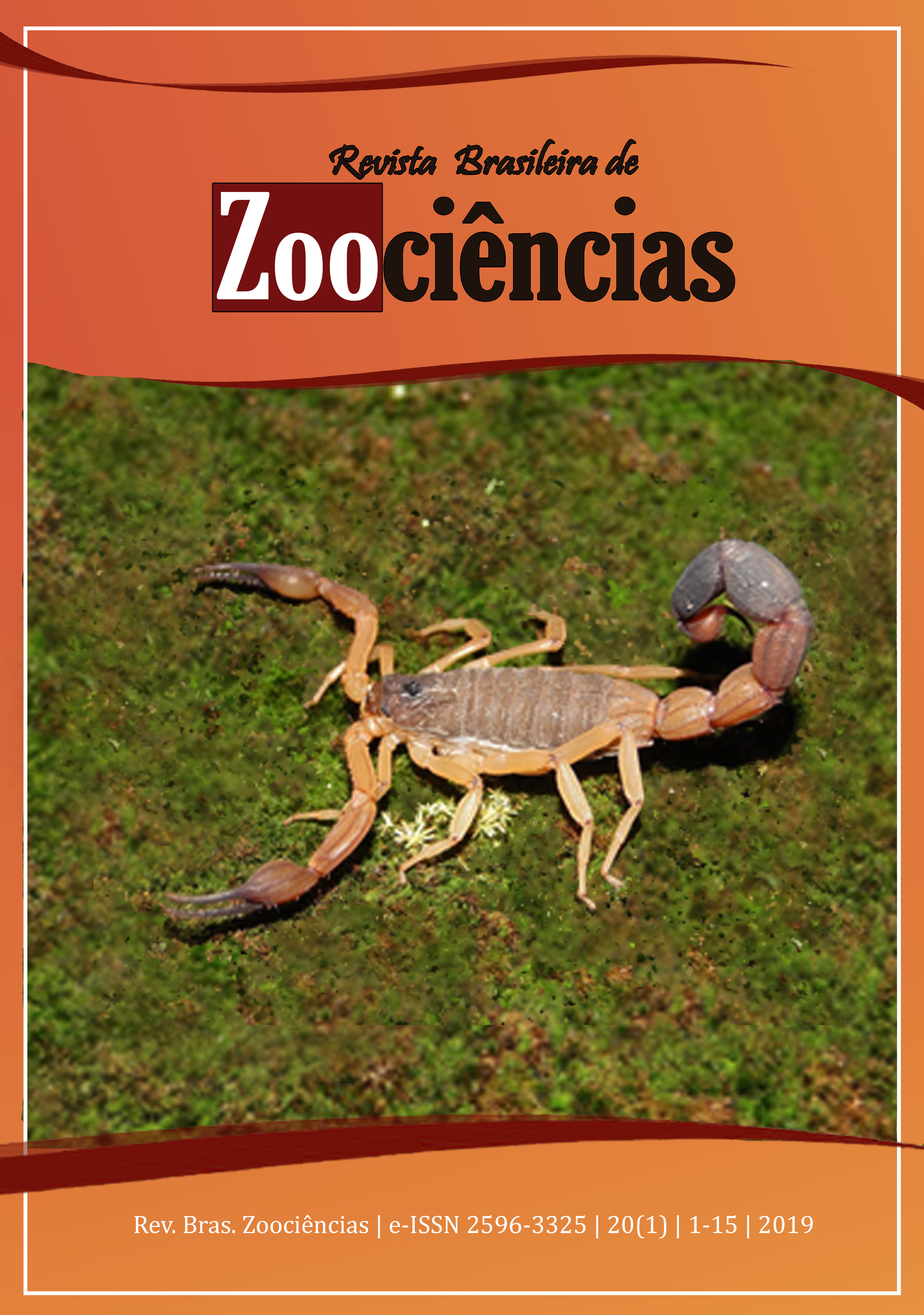Abundance and population fluctuation of the genus Chrysomya (Robineau-Desvoidy, 1830) (Diptera: Calliphoridae) during the decomposition stages of the carcass of Sus scrofa (Linnaeus, 1758) in the Northeastern region of Brazil
DOI:
https://doi.org/10.34019/2596-3325.2019.v20.24764Keywords:
Atlantic Forest, Blow flies, Forensic EntomologyAbstract
The species of the genus Chrysomya (Robineau-Desvoidy, 1830), Diptera: Calliphoridae are commonly known as blow flies. They are important from the epidemiological point of view, as vectors of microorganisms, but they play key roles in ecological and forensic processes. Thus, the objective was to know the abundance and population fluctuation of the genus Chrysomya during the stages of decomposition of the carcass of Sus scrofa in a fragment of Atlantic Forest in the Extreme South of Bahia. A pork shank of approximately three kilograms was allocated to a modified Shannon-type trap. Nine samples were collected, distributed in four phases (fresh, gaseous, coliquative and skeletal) of decay of the carcass from October to November of 2015. A total of 1299 flies were identified from four species of the Calliphoridae family: Chrysomya albiceps (Wiedemann, 1819), Chrysomya putoria (Wiedemann, 1830), Chrysomya megacephala (Fabricius, 1794) e Cochliomyia macellaria (Fabricius, 1775). The genus Chrysomya was more abundant in the gas phase. C. albiceps was the most abundant species, frequent and considered dominant. It had a positive correlation with the amount of putrid mass, and a negative correlation with presence of skeleton in the carcass. C. megacephala and C. putoria had no correlation with any of the factors analyzed, except for the amount of putrid mass, that had a positive correlation with this last species. Therefore, C. albiceps was the most representative species and was present throughout almost the entire decomposition process. It also points out that the gaseous was the most attractive decomposition stage for the species of this genus of Diptera. In contrast, in the skeletonization stage these species were absent. In addition, it was evidenced that the internal temperature and the internal humidity had little influence to attract the Chrysomia, being the putrid mass an important factor to attract two of the three species of the genus analyzed in this work.



